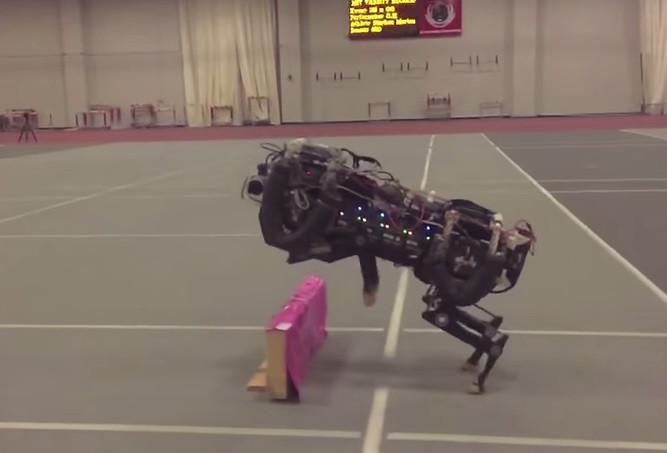Robot cheetah trained to jump hurdles as it runs at 5mph [Video]
A robot cheetah has been trained to run and jump over hurdles by MIT scientists.
A video released by the scientists shows the robot running at 5mph (a third of a human's average running speed) and clearing hurdles over half its height.
This is the first time a four-legged robot has been developed that can run and jump over obstacles autonomously.
The robot planned out its path then detects an approaching obstacle, estimates its height and distance then gauges the best position from which to jump. It then adjusts its stride to land just before the hurdle and hops over and resumes running.
Sangbae Kim, an assistant professor of mechanical engineering at MIT, said: "A running jump is a truly dynamic behaviour. You have to manage balance and energy, and be able to handle impact after landing. Our robot is specifically designed for those highly dynamic behaviours."

The team will present a paper on the robot cheetah in July at the conference Robotics: Science and Systems.
Researchers say the robot follows on from the 'cheetah' developed last year that could run untethered – they updated the technology to give the robot a visual system that uses reflections to map out the terrain. The visual and planning systems were incorporated into the robot, meaning it has complete autonomous control.
The robot cheetah was first tested on a treadmill, where it was able to clear about 70% of the hurdles placed in front of it. They then put it on a track, where it completed 90% of the jumps.
They are now working on getting the robot to jump hurdles while running on softer terrain such as grass.
Currently, the algorithm on board the robot does not provide optimal jumping control, meaning it sometimes jumps higher than it needs to. But Kim said this is not something of concern at present: "We're too obsessed with optimal solutions. This is one example where you just have to be good enough, because you're running, and have to make a decision very quickly."
The robot cheetah project is being funded by Darpa – the US military's advanced technology and science research group.
© Copyright IBTimes 2025. All rights reserved.






















